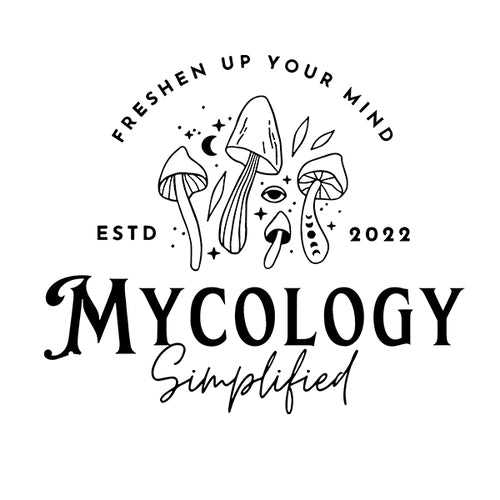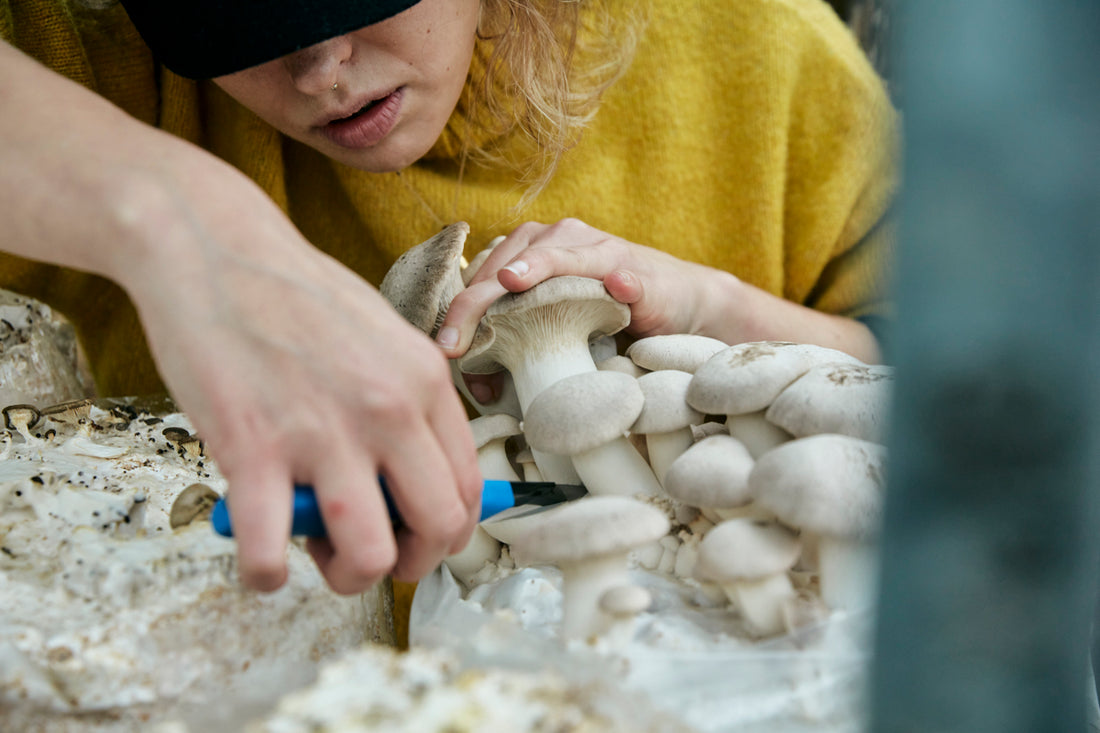Introduction to home mycology: What it is and why it matters
Home mycology is about growing fungi at home, which includes mushrooms, yeasts, and molds. It’s a field that’s gotten a lot more attention lately because of its benefits and the rise in people wanting to grow their own food, including mushrooms. Why does this matter? Well, for starters, mushrooms are more than just a tasty addition to your meal. They have significant health benefits, can break down waste materials, and are a key part of natural ecosystems. Getting into home mycology can help you understand these organisms better, contribute to sustainable living, and even improve your diet with home-grown mushrooms. Plus, it’s fascinating to see how these organisms grow and develop right in your own space.

The roots of home mycology: A brief history
Mycology, the study of fungi, has a rich history that goes back centuries, but it wasn’t always the accessible hobby it is today. Long ago, mycology was the realm of scientists and serious scholars, with everyday folks having little to no involvement. Fast forward, and the scope began to shift during the 20th century when advances in science and technology made it possible for ordinary people to explore this fascinating world from their homes. It started with the curious growing basic mushrooms for food and has evolved into a diverse community experimenting with various fungi for food, medicine, and ecological benefits. This transformation from an elite science to a popular hobby highlights not just the increasing interest in mycology but also shows how new technologies and a bit of curiosity can open up entirely new worlds for exploration.
Traditional methods of mushroom cultivation at home
Mushroom cultivation at home isn’t new. For years, enthusiasts have grown mushrooms using a process that mostly relies on patience and basic materials. Here’s the scoop on traditional methods. First, you start with spores or mycelium-infected grains, known as spawn. Next, you prepare the substrate. Common choices include straw, coffee grounds, or wood chips, depending on the mushroom type. Moisture is crucial, so the substrate must be damp but not soggy. Then, the spawn is mixed with the substrate and placed in a container or bag. This mix needs to be kept at the right temperature and humidity. Different mushrooms have different needs, but generally, you’re looking at keeping your setup in a dark, cool place. Finally, after a few weeks, you’ll start to see mushrooms forming. This method doesn’t require fancy equipment, just some knowledge, and attention to detail. While basic, it’s a rewarding way to start your mycology journey.
Breakthroughs in home mycology: An overview of new technologies
Mushroom enthusiasts, listen up! Home mycology is leveling up, thanks to some game-changing technologies. It’s not just about jars and spores anymore. We’re talking advanced gadgets and methods that make growing fungi at home simpler and more efficient. First off, there’s the rise of smart incubators. These aren’t your average incubators. They’re equipped with sensors and controls to maintain the perfect conditions for mushroom growth, adjusting temperature and humidity on the fly. No more guesswork or constant checking.
Then, there’s the use of LED grow lights. These aren’t ordinary lights. They’re designed to emit specific wavelengths that mushrooms love, speeding up their growth without the heat stress traditional bulbs can cause. And let’s not forget about hydroponic systems tailored for fungi. These systems ditch soil for water, making contamination less of a headache. Plus, they can be automated, meaning less work with more yield.
But it’s not just the hardware getting an upgrade. There are apps now that connect you with experts and fellow growers, offering tips, troubleshooting, and a community vibe you won’t find in old-school forums. And for those looking deep into the genetics of their shrooms, there are DNA sequencing kits. Yup, you can now analyze the genetic makeup of your mushrooms at home, picking the best strains with the most desirable traits.
So, whether you’re a seasoned mycologist or just starting, these innovations are making it easier, faster, and more fun to dive into the world of mushrooms. Keep an eye on these technologies. They’re reshaping how we approach home mycology.
DIY Mycology: Simple techniques for beginners
Starting with DIY mycology might seem like diving into deep waters, but it’s more like stepping into a shallow stream. The key is beginning with the basics. Firstly, choose easy-to-grow mushrooms like oyster or shiitake. These varieties are forgiving to newcomers and adapt well to various environments. Now, let’s talk substrate - that’s the material your mushrooms will grow on. For beginners, coffee grounds or straw are your best bets; they’re easy to find and work well. Next up, sterilization. This step is crucial. Simply boil your chosen substrate to kill off any unwanted bacteria or fungi. Once your substrate is ready and cooled, mix in your mushroom spores or spawn. Think of spawn like the seedlings of the mushroom world. After mixing, pack this blend into containers and keep them in a cool, dark place. Remember, mushrooms love humidity, so keep the environment moist. Spray with water if needed but don’t overdo it. Within a few weeks, you’ll see your mushrooms start to emerge. Voila! You’ve begun your mycology journey. Simple, right? Stick to these basics, and with patience, you’ll watch your efforts bloom into beautiful fungi.
Advanced techniques for seasoned mycologists
Seasoned mycologists, those who’ve been around the block a few times with their fungi, are always on the lookout for ways to up their game. Enter advanced techniques made possible by new technologies. First up, liquid cultures. These aren’t groundbreaking, but how we’re using them has changed. With precision tools, you can now create more concentrated cultures, speeding up the growth process. Then, there’s genetic sequencing. Yeah, it sounds fancy, and that’s because it is. This isn’t for your average hobbyist. It involves analyzing the DNA of mushrooms to identify and even improve strains. High-end tech, but for those who get it, it’s a game-changer. And let’s not forget environmental control systems. These systems let you play god with your grow environment. Temperature, humidity, even CO2 levels can be tweaked to perfection. It takes trial and error, but the payoff is mushrooms that might just be envy of your mycology circle. So, if you’re looking to step up, dive into these techniques. They’re not for the faint of heart, but for the passionate mycologist, they’re the next frontier.
The role of technology in modern mushroom cultivation
Technology is flipping the script on traditional mushroom growing, making it simpler and more efficient. Gone are the days when you needed a vast space or specialized skills. Now, with a few gadgets and the internet, anyone can dive into the world of home mycology. Here’s how tech is changing the game:
First, climate control systems are a game-changer. They let you manage temperature and humidity with the push of a button, creating the perfect environment for your mushrooms to thrive. No more guessing or constant checking.
Then, there’s LED grow lights. These lights mimic natural sunlight, helping mushrooms grow faster and healthier. Plus, they consume less energy, making them a win-win for you and the environment.
Hydroponics is another tech marvel in mushroom cultivation. This method grows mushrooms in water, enriched with minerals and nutrients, rather than soil. It’s cleaner, uses less space, and the mushrooms grow quicker.
Lastly, phone apps and online communities are invaluable resources. They offer tips, troubleshooting, and support from fellow mycologists. It’s like having a mentor in your pocket.
Together, these technologies are making mushroom growing more accessible, efficient, and sustainable. Whether you’re a newbie or a seasoned grower, there’s never been a better time to explore the world of home mycology.

Challenges and solutions in home mycology
Challenges in home mycology are like obstacles in a path. They’re there, but with the right know-how, you can maneuver through. First off, contamination is a biggie. It’s like unwanted guests at a party. This happens when mold or bacteria sneak into your cultivation, threatening your mushroom projects. Keeping things super clean and working in a sterile environment can help you sidestep this issue. Then there’s the problem of incorrect humidity and temperature. Mushrooms are picky; they need their environment just right. Too damp or too cold and they won’t grow. Solutions include using a humidity tent or a controlled grow box to keep conditions perfect. Lastly, identifying the correct type of nutrients and substrate can puzzle many beginners. Each mushroom species has its own menu of preferred nutrients. The trick is research. Understanding what your mushrooms love to “eat” goes a long way. In short, while these challenges might seem daunting, with patience and persistence, you can master the art of growing mushrooms at home. Every challenge has a solution, and in home mycology, it’s about learning, adapting, and enjoying the journey.
The future of home mycology: Trends and predictions
Home mycology, or the practice of cultivating fungi at home, is on a rise, and it’s evolving faster than many anticipated. Looking ahead, the realm of home mushroom cultivation is set to embrace innovation, making the process easier, more efficient, and even more sustainable for enthusiasts and beginners alike. Key trends include the adoption of smart technology, which integrates automated systems for optimal growing conditions. Think sensors and apps that remind you when to water or adjust humidity and temperature, making it almost foolproof. Another big shift is towards eco-friendly materials. The future will see mushroom kits with biodegradable components, reducing waste and enhancing sustainability. Furthermore, with the growing interest in exotic varieties, expect to see a wider availability of mushroom species, catering not just to culinary enthusiasts but also to those exploring medicinal and ecological benefits. Lastly, community and knowledge sharing platforms are becoming vital. Online forums, workshops, and social media groups are breaking down barriers, allowing for shared tips, troubleshooting, and innovations at a global scale. The mushroom community is growing, and so is its collective knowledge. In essence, home mycology is not just sticking around; it’s set to bloom in ways we’re just beginning to imagine.
Summary: How home mycology is changing the world of fungi cultivation
Home mycology is revolutionizing fungi cultivation, making it accessible to more people. Nowadays, new technologies and techniques make growing mushrooms at home simpler and more efficient. Gone are the days of complex setups and large spaces. Compact, user-friendly kits now let enthusiasts grow a variety of mushrooms in their own homes, even in small apartments. Innovations such as improved substrates, precision climate control devices, and detailed online guides help individuals achieve better yields and healthier fungi. This surge in home mycology is not just a hobby; it’s pushing the boundaries of what we know about fungi, contributing to research in medicine, sustainability, and food. People are discovering the joy and benefits of growing their own mushrooms, contributing to a greener planet and exploring new flavors in their kitchen. Indeed, home mycology is changing the world of fungi cultivation, one mushroom at a time.

